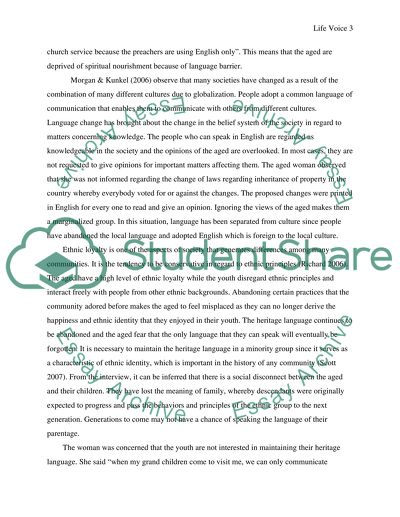Cite this document
(“Life Voice: Minority groups, language and culture Term Paper”, n.d.)
Retrieved from https://studentshare.org/miscellaneous/1559460-life-voice-minority-groups-language-and-culture
Retrieved from https://studentshare.org/miscellaneous/1559460-life-voice-minority-groups-language-and-culture
(Life Voice: Minority Groups, Language and Culture Term Paper)
https://studentshare.org/miscellaneous/1559460-life-voice-minority-groups-language-and-culture.
https://studentshare.org/miscellaneous/1559460-life-voice-minority-groups-language-and-culture.
“Life Voice: Minority Groups, Language and Culture Term Paper”, n.d. https://studentshare.org/miscellaneous/1559460-life-voice-minority-groups-language-and-culture.


